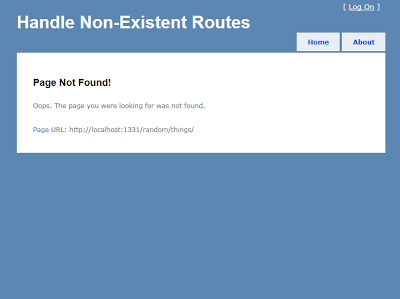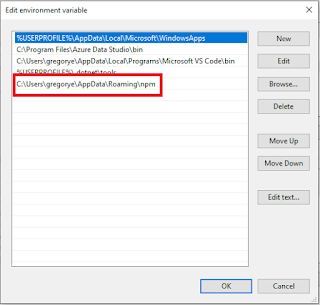ASP.NET MVC 404 Content Page Showing Or Appearing Twice
Good evening gents,
In handling 404 pages (pages that don't exist in the website),I encountered a problem wherein the asp.content tag/control would show twice in the page. Here's the server content code:
And here's the content being displayed twice.
The code I'm using was from a documentation/series on how to handle 404 pages. The tutorial has a controller factory that checks invalid routes and calls the base controller if a route is invalid. Below is the code:
In-order for content to be displayed once, add checking if the controller context
is not null.
The 404 controller shown only once.
The controller context is not null since ErrorController inherits base controller. The controller factory in turn does not inherit BaseController.
In handling 404 pages (pages that don't exist in the website),I encountered a problem wherein the asp.content tag/control would show twice in the page. Here's the server content code:
<asp:Content ID="Content2" ContentPlaceHolderID="MainContent" runat="server"> <h2>Page Not Found!</h2> <br /> Error in URL Navigation. The page you were looking for was not found. </asp:Content>
The code I'm using was from a documentation/series on how to handle 404 pages. The tutorial has a controller factory that checks invalid routes and calls the base controller if a route is invalid. Below is the code:
//inherit Controller Class public class BaseController : Controller { private string context; public string MyContextUrl { get { return context; } set { if (value == null) { throw new NullReferenceException(); } context = value; } } protected override void HandleUnknownAction(string actionName) { RouteToPage404(HttpContext); } public ActionResult RouteToPage404(HttpContextBase context) { //errorController instance IController errorController = new ErrorController(); RouteData rd = new RouteData(); rd.Values.Add("controller", "Error"); rd.Values.Add("action", "Http404"); //execute controller errorController.Execute(new RequestContext(context, rd)); return new EmptyResult(); } }
if (this.ControllerContext != null) { IController errorController = new ErrorController(); RouteData rd = new RouteData(); rd.Values.Add("controller", "Error"); rd.Values.Add("action", "Http404"); //execute controller errorController.Execute(new RequestContext(context, rd)); errorController.Execute(new RequestContext(context, rd)); } return new EmptyResult();





Comments
Post a Comment